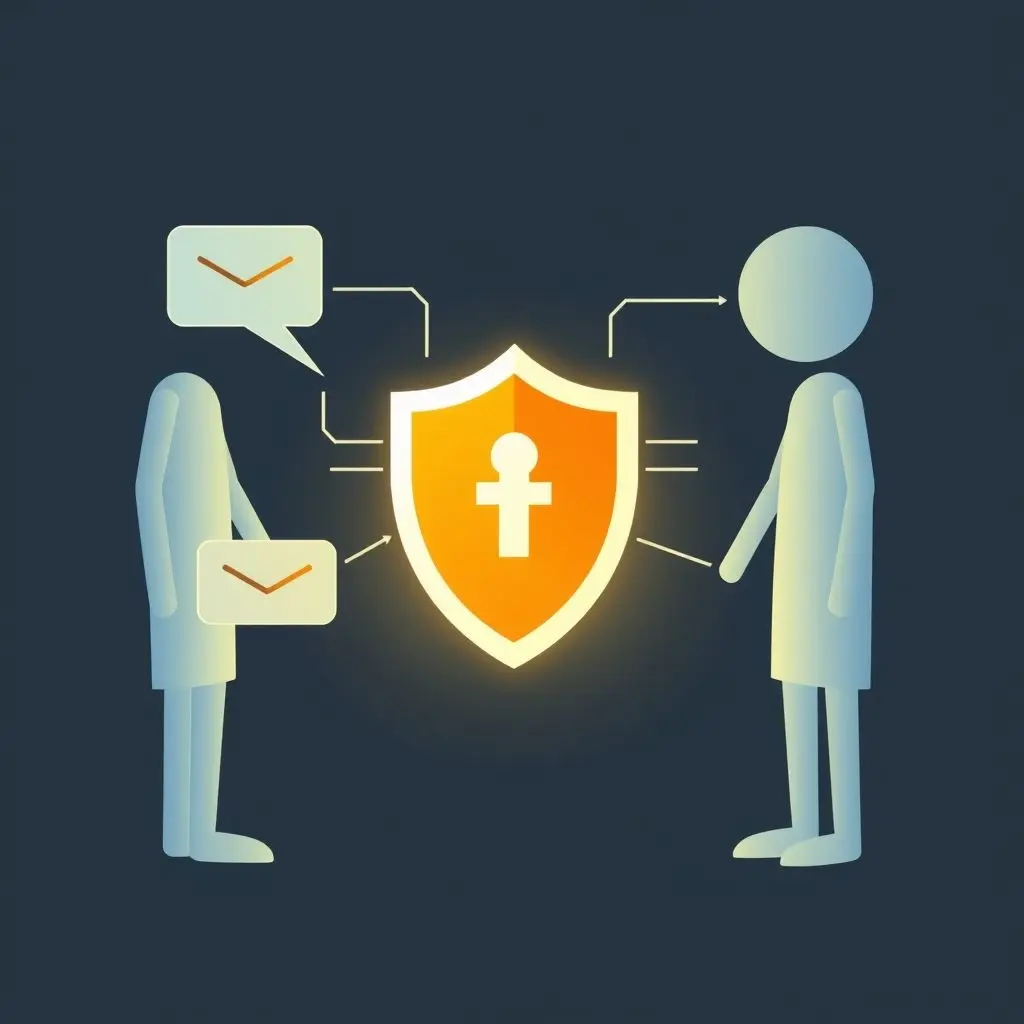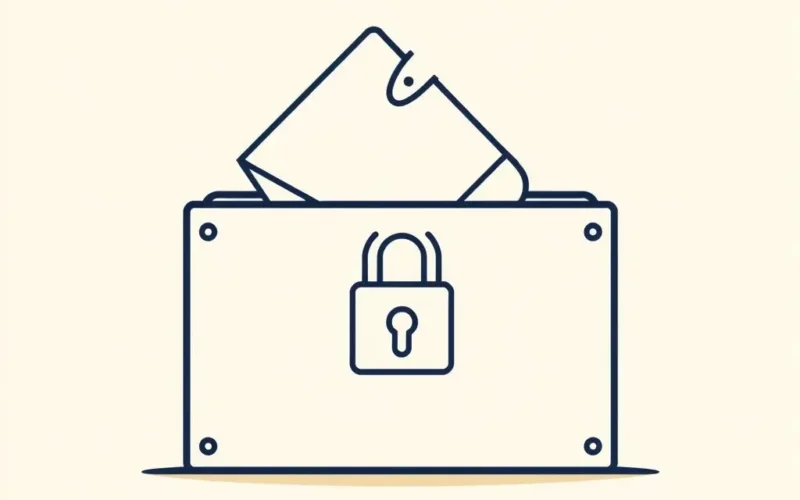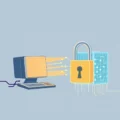Have you ever sent a message, shared a photo, or hopped on a video call online and paused, even for a fleeting moment, to wonder just who else might be privy to your digital conversation? In our increasingly connected world, that’s a perfectly valid thought. We share so much, and the path our data takes online can feel like a complex, winding road. But what if there was a way to ensure that your digital whispers truly remained just that – whispers intended only for the ears of your chosen listener?
Enter End-to-End Encryption, often abbreviated as E2EE. It sounds technical, perhaps a bit intimidating, but at its heart, the concept is beautifully simple and incredibly powerful. Let’s peel back the layers and decode exactly what it means for your online privacy and security.
Table of Contents
The Core Idea: Your Secret Digital Envelope
Imagine you have a highly sensitive letter you need to send. Instead of just dropping it in a standard mailbox, you place it inside a specially designed box, one that snaps shut with a unique lock. Crucially, you don’t have the key to this lock. Only the person you’re sending it to possesses the single, matching key that can open *this specific* box. You hand the locked box to the messenger (the internet or the service provider), and they carry it. Even if the messenger tried, they couldn’t open it. They might shake it, weigh it, or observe its journey, but the contents remain completely inaccessible. Only upon reaching the intended recipient, who uses their unique key, can the box be opened and the letter read.
That, in essence, is how End-to-End Encryption works. Your message, photo, video, or voice call data is the ‘secret letter’. The E2EE process is the ‘special locked box’. The ‘unique key’ is a cryptographic key known only to your device and the recipient’s device. When you send data using an E2EE service, it’s encrypted (locked) on your device before it even leaves. It travels across the internet, potentially passing through servers owned by the app provider, internet service providers (ISPs), and various network infrastructure. Throughout this journey, the data remains encrypted – a jumbled mess of characters and symbols that is meaningless to anyone who intercepts it. Only the recipient’s device has the necessary key to decrypt (unlock) it and turn it back into the original, readable information.
This mechanism ensures that the service provider whose app you are using, your ISP, or anyone else who might tap into the data stream cannot read the actual content of your communication. They can see that *someone* is communicating with *someone else* and perhaps the *size* of the data being transferred (this is known as metadata, which E2EE typically doesn’t protect), but the ‘what’ remains entirely private between the two endpoints – you and the intended recipient.
If that simple explanation resonated with you, perhaps this quick visual guide we put together will help solidify the concept:
Digging Deeper: How the Digital Keys Work
The magic behind the ‘unique key’ lies in cryptography, specifically a branch called asymmetric encryption, also known as public-key cryptography. While the actual algorithms are complex math, the functional idea is manageable:
- Each user has a pair of mathematically linked keys: a Public Key and a Private Key.
- Your Public Key is like a mailbox address that anyone can have. You can share it widely. It’s used to *encrypt* messages intended *for* you. Data encrypted with your Public Key can *only* be decrypted by your corresponding Private Key.
- Your Private Key is like the unique key to open your mailbox. It must be kept absolutely secret and only exists on your device(s). It’s used to *decrypt* messages encrypted with your Public Key, and in some systems, to *sign* messages you send (proving they came from you).
When you initiate an E2EE conversation with someone, your devices exchange Public Keys. When you type a message:
- Your device takes your message.
- It uses the recipient’s Public Key to encrypt the message.
- The encrypted message is sent over the internet.
- The recipient’s device receives the encrypted message.
- Their device uses their own Private Key to decrypt the message.
- The recipient can now read the message.
Because the Private Key never leaves the device, and the server/provider only ever handles the encrypted data and the Public Keys (which cannot decrypt the data they encrypted), they simply cannot read the content.

Why End-to-End Encryption is Crucial in the Digital Age
In an era where data is constantly being collected, analyzed, and unfortunately, sometimes breached, E2EE isn’t just a technical feature; it’s a fundamental pillar of digital privacy and security. Here’s why it matters:
- Protects Against Snooping: It prevents the company running the service, governments, or malicious actors from intercepting and reading your private conversations and shared data.
- Enhances Trust: It builds trust between users and the service provider, as users know the provider cannot access their sensitive information, even if compelled by authorities (though metadata can still be requested).
- Defends Against Data Breaches: If a service provider’s servers are hacked, attackers might gain access to stored encrypted data, but without the Private Keys (which are stored on user devices), the data remains unreadable.
- Secures Remote Work and Sensitive Communications: For businesses and individuals handling confidential information, E2EE provides a critical layer of security for remote discussions and file sharing.

Where You Encounter E2EE
You’re likely using E2EE more than you realize. Many popular communication platforms have adopted it as a standard or optional feature:
- Messaging Apps: WhatsApp, Signal (E2EE by default for messages and calls), Telegram (offers E2EE for ‘Secret Chats’ only), Apple’s iMessage (between Apple devices).
- Video Conferencing: Some platforms offer E2EE for video calls, ensuring the content of the call remains private to participants.
- Cloud Storage: Some specialized cloud storage providers offer E2EE, meaning files are encrypted on your device *before* being uploaded, and the provider never holds the key. (Note: Many major cloud providers encrypt data *on their servers*, which protects against external breaches but allows the provider access).
- Email: While not standard for most email providers, some email services and plugins offer E2EE capabilities.
![]()
Important Considerations and Nuances
While E2EE is a powerful privacy tool, it’s essential to understand its limitations:
- Metadata is Often Not Encrypted: Services using E2EE typically still have access to metadata – who you are talking to, when, how often, and potentially your location (if location sharing is enabled). This metadata can still be valuable for surveillance or analysis.
- Endpoint Security is Paramount: E2EE protects data in transit and at rest on the device, but it cannot protect against threats on the devices themselves. If your phone or computer is compromised by malware that can read your screen or access data before it’s encrypted or after it’s decrypted, E2EE offers no protection against that local compromise. Your device is the ‘endpoint’, and its security is your responsibility.
- Backups Can Be a Weak Point: If you back up your encrypted chats to the cloud or a computer, the backup itself might not be E2EE by default. Ensure you understand how backups are handled by the service and your device.
- Service Implementation Matters: The security of E2EE relies heavily on its correct technical implementation by the service provider. Flaws in the code or design can potentially create vulnerabilities. Reputable services often undergo independent security audits.
- Group Chats Complexity: E2EE in group chats is more complex, involving managing keys for multiple participants. While robust protocols exist, the complexity is higher.
- Not a Magic Bullet: E2EE doesn’t protect you from social engineering, phishing attacks, or giving someone direct access to your unlocked device.
Frequently Asked Questions About E2EE
Here are answers to some common questions about End-to-End Encryption:
Q: Is End-to-End Encryption truly unbreakable?
A: In theory, with enough computing power and time, any encryption can potentially be broken. However, the E2EE algorithms used today are based on strong cryptography that would require an astronomical amount of resources and time to brute-force, making it effectively unbreakable with current technology for practical purposes.
Q: Does my internet provider (ISP) see my messages if they are End-to-End Encrypted?
A: No. Your ISP can see that you are connecting to a certain service (like WhatsApp’s servers) and the volume of data being transferred, but they cannot read the content of the messages because they are encrypted on your device before they pass through the ISP’s network.
Q: Can a service provider (like WhatsApp or Signal) read my End-to-End Encrypted messages?
A: No. By definition, with true E2EE implemented correctly, the service provider does not hold the keys required to decrypt your messages. They only handle the encrypted data. This is a core principle that differentiates E2EE from other forms of encryption where the provider might hold the keys.
Q: What happens if one of the devices in an E2EE conversation is compromised?
A: If a device at either end of the conversation is compromised (e.g., by malware), the attacker could potentially read messages after they are decrypted on that device or before they are encrypted. E2EE protects the data *in transit*, not the security of the endpoints themselves. This highlights the importance of securing your devices.
Q: Is E2EE mandatory on all messaging apps?
A: No. While some apps like Signal and WhatsApp have it enabled by default for most communications, others like Telegram offer it only in specific features (‘Secret Chats’), and many older or less privacy-focused apps do not use it at all.
Q: Does E2EE prevent governments or law enforcement from accessing communications?
A: E2EE prevents third parties, including governments, from reading the content of intercepted communications *in transit* if they try to get it from the service provider’s servers. However, governments might still obtain message content or metadata through other legal means, such as compelling a company to provide unencrypted data stored elsewhere (like backups), or by targeting the endpoints (the devices) themselves with warrants or other methods permitted by law. The debate around balancing E2EE and law enforcement access is complex and ongoing globally.
Ensuring Your Digital Whispers Remain Private
Understanding End-to-End Encryption empowers you to make informed choices about the digital tools you use. It’s a powerful shield for your privacy, transforming your communications into a private exchange, a locked conversation where your sensitive information travels securely, beyond the reach of unintended eyes. It’s about taking control of your digital footprint and ensuring that your online interactions remain as personal and confidential as they are meant to be.
By choosing services that prioritize and correctly implement E2EE, you’re taking a significant step towards safeguarding your digital life in an increasingly interconnected world. Your secrets flow, through digital air, encrypted tight, beyond compare, a locked exchange, for eyes who care, your private words, forever fair.





